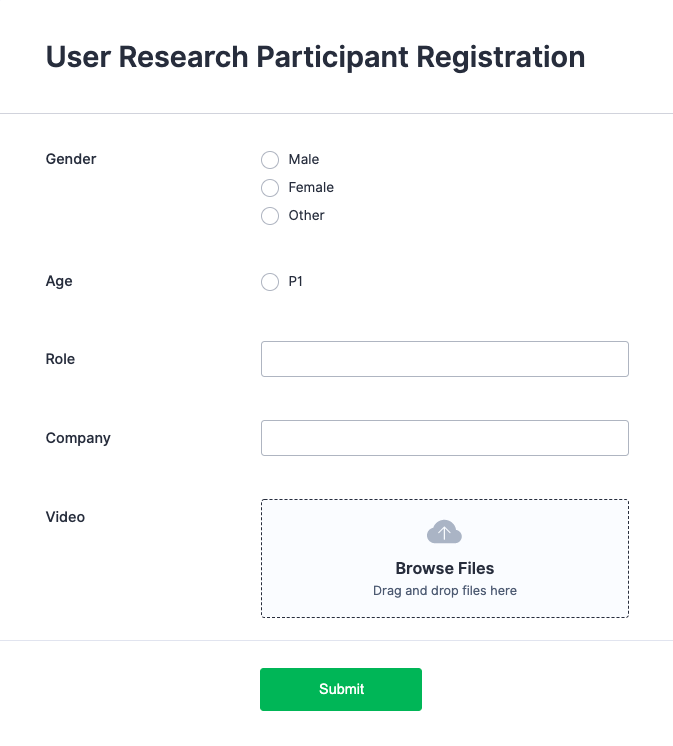5 UX research methods for planning
Let’s say you’re going on a road trip. You’ve packed your snacks and your bags, and you have podcasts at the ready. All that’s left to do is plug your destination into the GPS.
The nice thing about GPS technology is that the route it gives you accounts for traffic to help you get from Point A to Point B as fast as possible. When you’re driving a long distance, there’s often only one right answer for getting where you need to go.
When you’re conducting user research, things are a bit different. Sure, if you do things well, there will be a straight line from the start of your research to your results. But the user research methods you can choose from are vast and varied, so it’s important to understand each of them and pick the best one for your specific task.
Here are some basic user research methods you should consider.
1. Interviews
There are two broad types of user research — qualitative and quantitative. Qualitative research gathers data based on personal experience and feelings, whereas quantitative is more concerned with data and statistics.
Interviews fall into the qualitative category. They involve speaking to a subject and asking them a set of questions. You should prepare your questions in advance, but you also need to be flexible and make adjustments, depending on how the interview plays out.
With this method, you’ll be able to compare and contrast participants’ answers to see what comes up most often. Talking to your users directly can be an invaluable exercise in taking stock of how they feel about your business, what improvements they’d like to see, and how they’re responding to your products overall.
2. Observation
Observation is a broad user research method, and that’s on purpose. You can observe the gaps between what your users say and what they do when you’re conducting a study. You can also observe their behavior and reactions when they interact with a product you’ve put in front of them.
It’s important to be sharp in the observation process — this method is all about picking up on the small things.
While you’re listening to your participants or watching what they do, take note of their behavior and posture. Are they nervous? Excited? These are things that won’t show up in your transcripts, but they provide information that’s just as valuable in helping you understand how people’s instincts guide them when they engage with your business.
3. Focus groups
If you want to gather a large amount of data at once, focus groups are a great user research method to use. Where an interview is more of an individual exercise, a focus group is a way to ask a lot of people in the same room about their thoughts and feelings.
These types of sessions are great for fostering conversation, as people tend to bounce their opinions off of each other in a more open forum. And seeing someone else speak up might make others in the group more likely to share.
Make sure you have concrete questions in place — because of the format, your conversation might be unpredictable, so you’ll want to be sure you hit your marks. But don’t be afraid to adjust on the fly — someone might say something you’re not expecting, and following up could start a discussion that reveals things you hadn’t thought about before.
4. A/B testing
A/B testing falls firmly in the quantitative category of user research methods. An A/B test is a way to dig deeper into your research by comparing two different things to determine how you should proceed. Show your users the two things you’re testing — a button, a new homepage, a new logo — in a randomized order and see which they like best.
Even though you might have an idea of your preference, getting outside opinions can either provide reassurance or force you to think more critically about your approach. Plus, instead of asking questions that might be more abstract about thoughts or feelings, the results you produce are going to be decisive — either one option or the other will win.
Maybe you don’t have the resources to bring in people one by one and interview them. Not a problem! There are other options.
5. Surveys
A survey is an effective way to reach a lot of people in a short amount of time. Your goal in a survey is to gather data about how someone might behave or how they respond to an aspect of your business rather than specifically how they feel.
And there’s one major benefit to using a survey if you’re asking sensitive questions — your responders are anonymous, so they might feel more comfortable sharing freely.
With Jotform, you can create custom surveys and questionnaires formatted to include the things you want to ask and gather the information you need. You can embed the survey directly on your website.
Surveys produce a lot of data, but Jotform’s form analytics feature will help you break down your results.
Design matters
No two user research processes are going to be the same. There are certain objectives you’ll define in one project that will differ from another. That’s why it’s important to be aware of the various user research methods so you can choose the best fit for your research goals.
Your users are probably your most valuable resource, as they provide direct feedback on what they think about your business and its operations. It’s your job to make sure that the time they spend with you is worthwhile and productive — on both their end and yours.

















Send Comment: